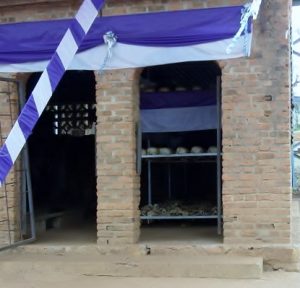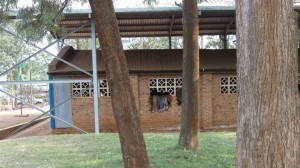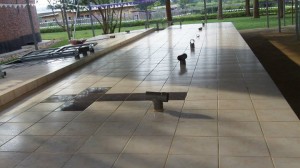
In the previous post I talked about how the church in Kabale is doing incredible ministry in its community. On Day 8, we visited the church’s nursery school and met with its youth group, men’s group, and women’s groups. It was neat to see how similar the issues are cross-culturally. Then, on Day 9, we drove to Rwanda. I had tried to prepare myself for the grisly scenes to come.
I was not prepared.
I vaguely remember hearing about the genocide of 94, which happened when I was in high school. When we arrived in Rwanda, we found that the official museum was closed because of the Ugandan President’s visit. So we went to a church memorial. These are extremely common and are rather shocking.

Why churches? You see, in previous skirmishes churches had been a safe haven. Not in 1994. People flocked to the churches thinking they would be safe. Often women and children would squeeze inside–thousands into tiny block buildings–and the men would surround it in the yard. The Hutus did not care that they were on sacred ground. Tutsis were killed by machete, sticks, grenades, and guns. You can tour the churches and see the damage caused by grenades, the clothing of the people who were killed on the grounds, pots and pans that people had taken with them, and the stench of death permeates the building. You are not allowed to take pictures inside the buildings without a special permit.

We were told that sometimes the priests were involved in tipping off the Hutus that the Tutsis were gathered in the churches.
At another memorial, the bones from all the bodies were stacked inside an underground tomb. There was a small pathway that you could walk through just inches away from the thousands and thousands of skulls and femurs and clothing. I just couldn’t bring myself to go down there.

I was brought to my knees in prayer. How could this happen, right in churches? On my Facebook page that day I wrote,
“I am now convinced of man’s total depravity. The bones and clothes of genocide victims in Rwanda cry out, betrayed by even their own pastors and priests, testifying to the spears, machetes, and bullets that took the lives of nearly a million men, women, and even babies, who were killed by smashing their heads on brick walls.”
On Day 9 we decided that we could not take any more memorials. The official museum was closed because of cleaning day. So we decided to drive back to Uganda. Besides, the next day we would be participating in our final worship service with Kabale PAG. It was a somber drive home.
Day 10 was our final worship service, and a day of saying goodbye to new friends. The guest house where we had been staying had become like a second home. I was exhausted as I lay down that night, emotionally drained and physically tired from the long drives.


What's on your mind?